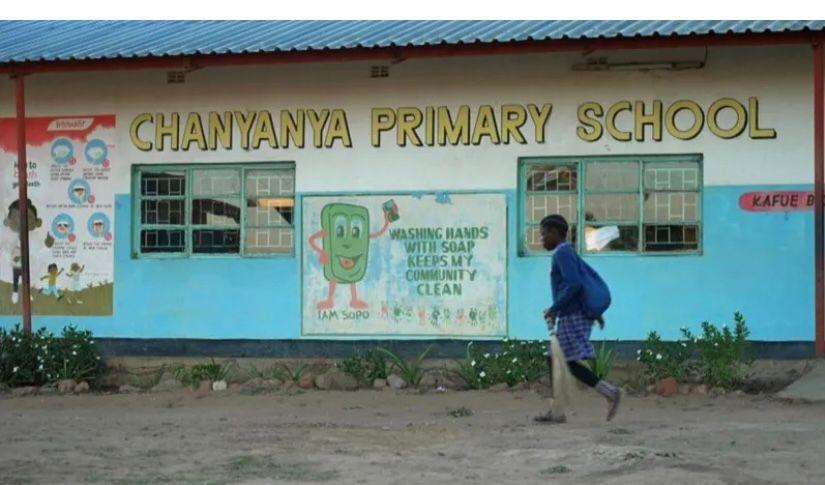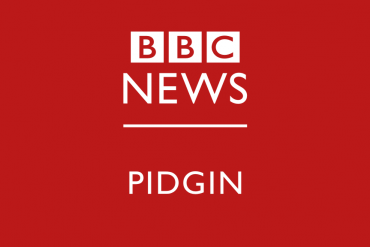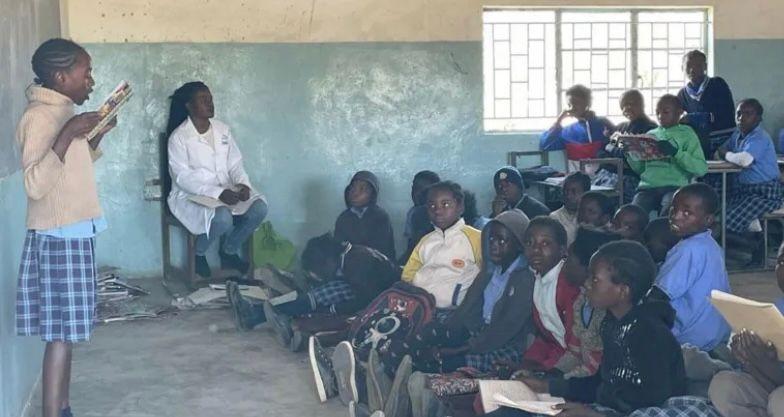
Na 07:00 on one cold winter morning and a group of students just arrive Chanyanya Primary and Secondary school, just over one hour drive south-west of Zambia capital, Lusaka.
“You need to come early to school becos we get shortage of desks,” na so 16-year-old pupil Richard Banda tok. “Two days ago I come late and I sidon for ground – e bin dey so cold.”
Im discomfort summarise di problem of lack of resources and overcrowding wey don come as a result of offering free primary and secondary school education here.
Di school dey for one compound wey get 10 classrooms wey dem arrange inside horseshoe shape around one playground wia acacia trees and plants dey grow from di sandy soil.
Di rays of di early-morning sun dey shine through inside cloud of dust wey rise up as di boys and girls dey sweep di classrooms.
Just bifor di bell ring, one of di students run go di middle of di playground and raise di Zambian flag on top a tall pole.
Dis start-of-di-day rituals don become part of a new routine for two million extra children wey since 2021 don dey go to di public schools wey dem no dey pay for becos goment make schooling free for evri one.
But without enof infrastructure investment, sabi pipo say overcrowding now dey threaten di quality of education, especially for low-income students.
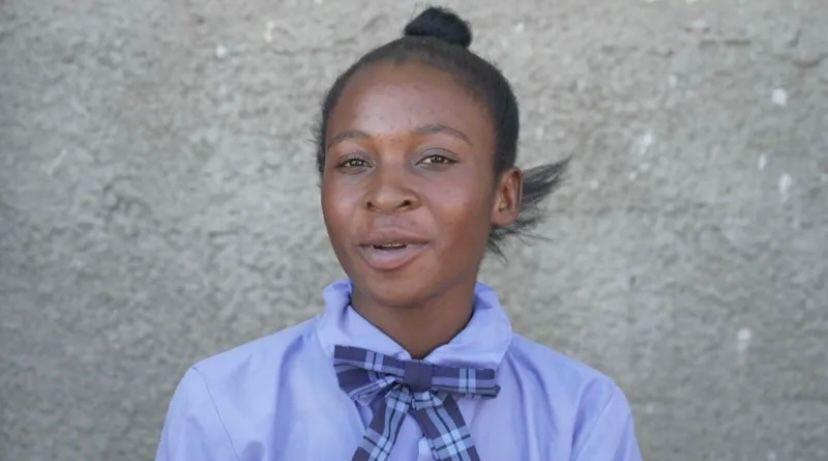
“I stop to go school in 2016 wen I bin dey grade four,” na so 18-year-old Mariana Chirwa tok as she wear di Chanyanya girls uniform, a light-blue shirt with a tartan bow.
“Without free education I no know how my parents for manage take me back to school. Dem no dey work and just dey stay at home.”
A poster of di class sizes wey hang on di wall of di headteacher office spell out di kain challenge schools like Chanyanya dey face.
For one of di classrooms, 75 boys and 85 girls dey squeeze into space wey for comfortably fit only 30 pupils.
“Wen I start in 2019 I bin get about 40 students, but now na around 100 plus, and dat na just one class,” na so 33-year-old teacher Cleopatra Zulu tok.
“Each and evri day we dey receive new learners becos of free education. To tok one-on-one dey hard, even marking na challenge. We don even reduce di number of subjects wey we dey give dem”.
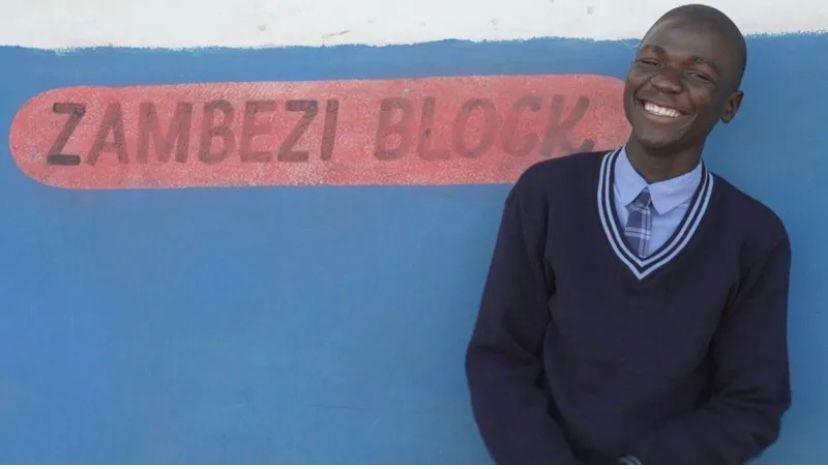
Di experience of one pupil, Richard Banda reflect dis tin.
“We no dey learn in di same way as those times wen we bi dey pay, e get a small difference,” na so e tell di BBC.
“Wen we bin dey few, di teacher go explain a topic again if you no understand, but now becos we plenti, di teacher no dey repeat am again. Dat na di difference.”
Di rise in di number of learners dey reflected across sub-Saharan Africa wit more children in school dan ever bifor, as di UN children agency Unicef tok.
But wit nine out of 10 primary school students for di region still dey struggle to read and understand simple texts, according to Unicef, di focus for policy-makers now dey shift to di quality of di education, di hiring of qualified teachers and di physical infrastructure and resources.
“Wen you no sidon well for class, dat wan dey affect di way wey you go pay attention to di teaching, di way wey you go write your notes,” na so Aaron Chansa, di director of di National Action of Quality Education in Zambia (NAQEZ), wey di goment consult tok.
“We dey see learners wey dey get into secondary school wen dem no fit read properly,” e tok, den say dis na di problems wey dey across di kontri.
“For di Eastern Province we get more dan 100 learners in one class. Dis don also worsen di book-to-pupil ratio. In some cases you go find six to seven learners dey fight over one book.”
Di goment say dem dey listen and dey take steps to address di challenges wey making education free don create
“Dis na good problem,” na so Education Minister Douglas Syakalima tok. “I rather let di children to dey inside a congested classroom dan to dey for street.”
“Di president don launch mass production of desks, mass infrastructure-building also dey happen.”
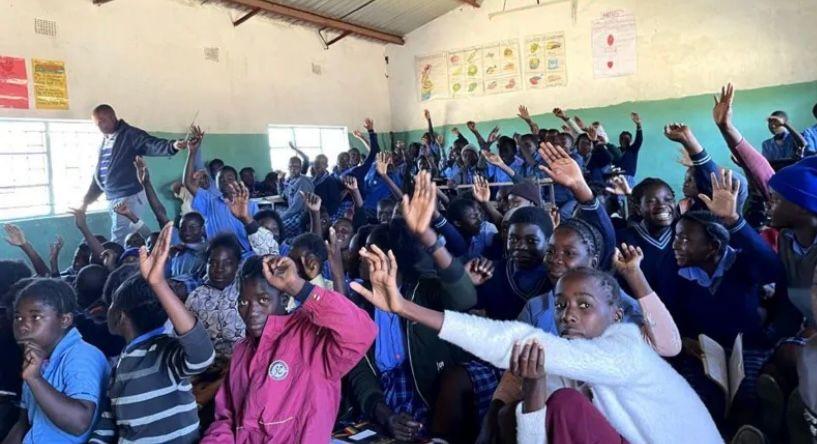
Zambia don invest over $1bn (£784m) in di education sector since di introduction of free education three years ago – a much-needed boost afta years of decline in spending.
Di goment don announce plans to build over 170 new schools and don commit to recruit 55,000 new teachers by di end of 2026, wey be say 37,000 already don dey hired.
Di move don provide fresh job opportunities, but e also don lead to shortage of accommodation for rural areas. Some teachers dey reported to dey live in grass-thatched houses and share pit latrines, wey dey at di risk of overflowing.
“Wen e be rainy season here, you no go really wan visit us,” na so Ms Zulu, wey dey live for di school compound tok and she remember how she fear for di risk of cholera during di outbreak earlier dis year.
Just outside her house, a large patch of shower gel wey don dry mark di spot wia one of di residents bin baff earlier, in di open, wit privacy provided only by di darkness before sunrise.
“Di houses wey we dey live in dey more like death-trap,” Ms Zulu tok. “Di goment gatz do sometin about di houses, especially di toilets.”
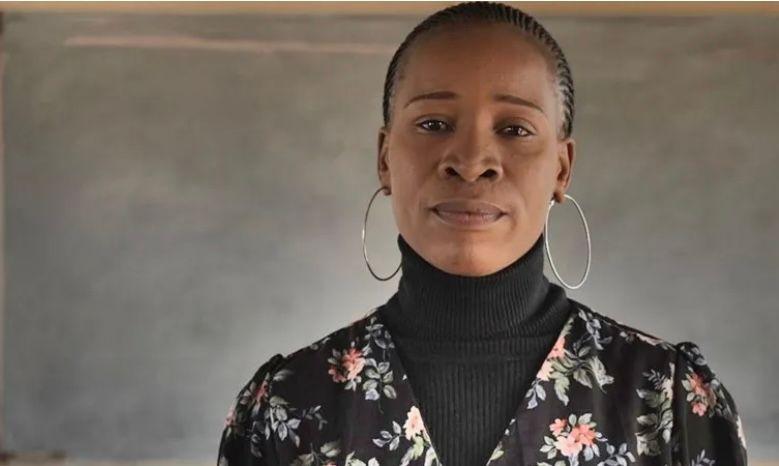
Worried about learning outcomes, some families don begin quietly take action.
Robert Mwape na taxi driver wey base forLusaka.
In 2022, im move im 11-year-old son from a private, fee-paying school to a public one to take advantage of di free education, but e soon regret di move.
“I notice [my son] results begin dey go down. So one day I decide to visit di classroom. Dem dey too many. You know how young pipo dey like – so many of dem, and dem dey waste time dey tok-tok. Di teacher focus di entire class.”
Di following year oga Mwape, wey no want us to use im real name, change im original decision. Now aged 13, im son don go back to di private school.
Wit Zambia slowly dey come out from a debt default in 2020, some sabi pipo don cast doubt over di sustainability of di free education policy.
One 2023 report from di Zambia Institute for Policy Analysis and Research say if all eligible students take up di offer of free education, goment expenditure dey estimated to double, “wey raise questions on di commitment of subsequent goments to kontinu di policy”.
But di education minister say im dey confident say di administration go fit shoulder di cost.
“I no see [di challenge] myself. Education na di best economic policy, ” Oga Syakalima tok.
Making school free dey widely seen as a first step towards giving young Zambians a fair chance to a brighter future.
But di kontri experience so far dey show di challenges of managing a growing number of students while dem still dey try to maintain di quality of di education dem dey receive.
